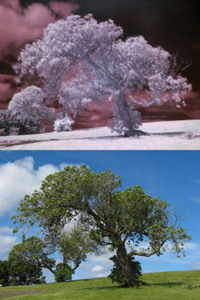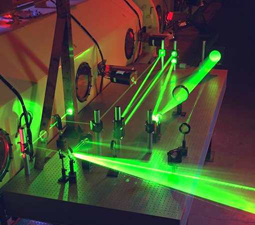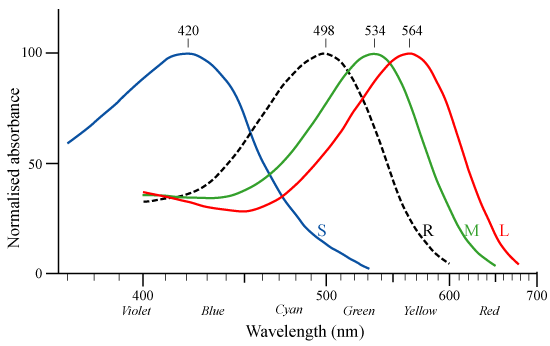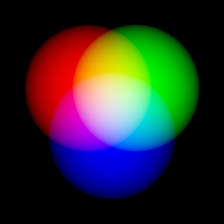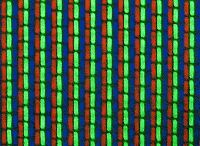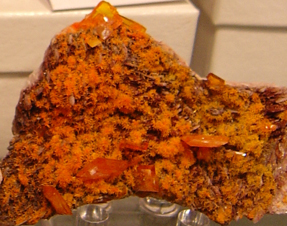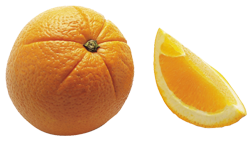 |
Home Support Engineering Software Engineering Sensory Experience Spare Equipment |
Accessible/Content-Only/Printer-Friendly Jann Padley Sensory Experience Telephone: 01452-840714 (UK) Mobile: 07800-603610 (UK) Enquiries@JPSE.Co.UK |
| Introduction | |
| Fine Art Prints | |
| Fine Art Print Details | |
| Reproduction | |
| Colour Theory |

|
| Colour Management | |
| Materials and Methods | |
| Colour Managed Workflow | |
| Book With No Words |
Colour Theory
Colour is the human perception of light, properly known as chromatics.
To handle images for a completely different creature - maybe a snake (which can see infra-red) or a bee (which can see ultra-violet) - we would have to use different methods and possibly even different theories of colour and light. This section explains the basic theory needed to successfully reproduce a picture or a painting:
The Nature of Colour
"Neon" and laser lights consist of a single pure colour of light, whereas sunlight contains all the component colours of light.
Most objects reflect a complex spectrum of colours, but we perceive this as a single colour. We cannot see the component colours of an object, but only the average colour. For example, if an artist mixes several paints to create a purple colour, we see the purple colour, but not the component colours.
Human vision constructs the average colour from the responses of three types of colour receptors that detect different ranges of colour (corresponding roughly to the primary colours of light - red, green and blue). Digital cameras do a very similar thing, and other (digital) imaging systems also use just a few component colours.
- Television uses a mixture of glowing red, green and blue dots to create an average colour.
- A flatbed scanner has three types of detector that respond to different ranges of colour.
- A traditional inkjet printer mixes dots of cyan, magenta, yellow and black to create an average colour.
- Some modern inkjet printers have extra inks to create a wider range of colours
So it is important to remember that a photograph does not reproduce the component colours, but merely a representation of the average colours. A photograph captures the average purple colour in the artist’s paint, but not the individual colour components.
The Nature of White
White light is the combination of all colours of the spectrum emitted by a hot black body, such as the sun. So for example:
-
When white light illuminates a pure orange (single colour) object like the crystal shown on the left,
the orange component of the white light is reflected to produce an orange colour.
- When white light illuminates a composite orange (multiple colour) object like the orange fruit shown on the right, multiple component colours of the light are reflected to produce an orange colour.
These two objects look the same colour because the light reflected off them stimulates the three different types of receptor in our eyes in the same proportions.
If the illuminating light only contains one component colour, like a "neon" or laser light, then all of the light reflected off objects is the same colour, and the colours of objects cannot be determined or distinguished at all. For example, the low-pressure sodium lamps commonly used for street lights emit a yellow light that makes everything look the same colour.
In general, the light reflected from an object is the product of:
- The component colours in the illuminating light
- The degree to which the object reflects each of the component colours

The light emitted by a hot black body contains all of the component colours of light and has a Colour Rendering Index of close to 100, meaning it is perfect for distinguishing the colour of objects. This includes sunlight and incandescent light (such as tungsten filament, tungsten halogen, metal halide or arc lamps). "Neon" and laser lights only include one frequency of light and have a Colour Rendering Index of about 0, meaning they are useless for distinguishing the colour of objects. It is possible to simulate white light using a mixture of the primary colours of light (red, green and blue), but this cannot be considered a proper white. For example, the apparently white light produced by standard household fluorescent tubes is not a smooth distribution of all the colours of the spectrum and cannot be used for accurate colour photography.
Strictly speaking, the word "white" should not be applied to objects. However, if white light shines on an object, and the reflected light is white, then we say that the object is white.
The Temperature of White

White light contains all the colours of the spectrum, but not in equal measure. For example, the most intense component colour in strong daylight is blue, but the most intense component colour in a sunset is orange or even red. It is not surprising that our vision has evolved to handle all types of daylight. What is amazing is that our vision adapts to this range of white lights so well that we can hardly tell the difference and objects always appear to be the correct colour.

- Normal household (incandescent) light-bulbs produce a yellow-orange light, whereas arc lights produce a blue light.
- If you carefully examine a candle flame you will see that it is blue near the wick (where it is hottest) and fades through yellow and orange to the cooler extremities of the flame.
| Temperature | Kelvin | Celsius | Fahrenheit |
|---|---|---|---|
| Candle | 1,850 | 1,575 | 2,870 |
| Lightbulb | 2,800 | 2,525 | 4,580 | Moonlight | 4,100 | 3,825 | 6,920 |
| Daylight | 5,000 | 4,725 | 8,540 |
| Europe Standard D65 | 6,500 | 6,225 | 11,240 |

